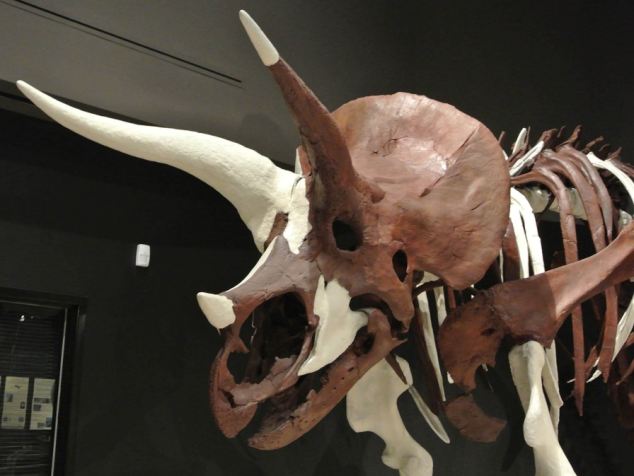The evolution and diversification of the iconic dinosaur Triceratops has been a bone of contention for almost two centuries. John B. Scannella and colleagues from Montana State University and the University of California at Berkeley have produced the first analysis of Triceratops evolution correlated with the age of the strata where the fossils were found.
The Hell Creek Formation of Montana contains fossil-bearing strata that extend 300 feet below the surface. More different forms of Triceratops have been discovered in this region than in any other area of the world. Over fifty different Triceratops fossils have been found in the area. The skulls of Triceratops are usually the most prominent remains of the animals and changes in the skull structure have been used to differentiate different species.
Over the years of analysis of Triceratops skulls found in the Hell Creek Formation two species of Triceratops have emerged. Triceratops horridus has been found only in the lower levels of the fossil beds. Triceratops prorsus fossils have been found only in the upper 100 feet of the fossil strata. The two species are separated by 2 million years in time.
The researchers examined 50 Triceratops skulls. The changes in the skulls indicate evolutionary changes. Triceratops skulls are classified by the shape and size of the nasal horn, the size of the other horns, and the size of the skull.
The regimented analysis of Triceratops physiology correlated with the location of the fossils in the soil where the fossils were found produced the first direct proof that Triceratops prorsus evolved from Triceratops horridus. The evolution was a slow transformation that took a minimum of one million years. The two species were proven to never have existed during the same time by this new method. The discovery should settle any arguments about Triceratops evolution in Montana.















